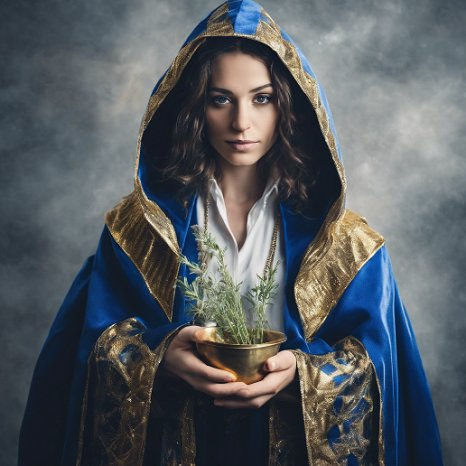Women of Alchemy - Mary the Jewess
- Sylvia Rose

- Oct 19, 2023
- 3 min read
Updated: Oct 7, 2024
Mary the Jewess, Maria the Jewess or Maria Prophetissa is considered the world's first alchemist. Working in Alexandria, Egypt, she's acclaimed by later writers. She is credited with several inventions highly respected in the field of alchemy.
Mary is best known through works of Zosimos of Panopolis (c. 300 AD) and other alchemists and writers over the years. She has numerous inventions to her credit. Zosimos considers her the first true alchemist of the Western World.
Her exact time frame is obscure. She works and teaches in Alexandria between c. 100 - 200 AD but it's not known if she's born there. She is Jewish, has an excellent education and speaks and writes several languages.

Maria speaks of a mystic stone, a white herb and the color of metals. Alexandria is a major glass making center and she's overjoyed to see her experiments in action through glass vessels.
Alchemy is based on the older science of metallurgy, among others. For a metal to be born, Mary says, another must die.
She often describes the union of opposites:
"Join the male and the female, and you will find what is sought."
Maria incorporates animistic qualities, such as bodies, souls and spirits into her descriptions of metal. She explains metals have different genders. By joining genders a new element is created.
Zosimos calls Mary 'one of the sages'. He writes of Mary living in the past or having past lives. Mary's listed by the 10th century Arabian directory Kitāb al-Fihrist as one of the 52 most famous alchemists.
Arabs know her as the Daughter of Plato. In Western alchemical texts, the term Daughter of Plato is used for white sulfur.
In a Hebrew text she's called daughter of Pluto (Gr. Hades), perhaps a linguistic mixup, or due to her association with metals and metal smithing. The metals, born deep in the earth, relate to the chthonic domain in Greco-Roman lore.
It's said she knows how to prepare caput mortuum (lit. dead head), a dusky purple pigment. The pigment comes from a type of hematite, an iron ore. Preparing it is not so easy. Hematite yields earthy red when ground, but purple is the trick. Dead head refers to the slag or leftover material of a product or process.

The Axiom of Maria is a precept in alchemy
"One becomes two, two becomes three, and out of the third comes the one as the fourth."
Author of Atalanta Fugiens (1618) Michael Maier names Mary the Jewess as one of four women who knows how to make the Philosophers' Stone. By the time the Renaissance rolls around, the fabled Philosophers' Stone is all about making gold, and real gold, not the colored metal which is the art of the alchemists.
Her inventions include the tribikos, the kerotakis and the bain-Marie, which bears her name. The tribikos is a vessel with three arms to separate distillation products. The kerotakis is used to heat substances and collect vapors.
The bain-Marie limits the maximum temperature of a container and contents to the boiling point of a separate liquid. It functions as a double boiler. Mary's inventions are still in use today.
Non-Fiction Books:
Fiction Books:
READ: Lora Ley Adventures - Germanic Mythology Fiction Series
READ: Reiker For Hire - Victorian Detective Murder Mysteries







